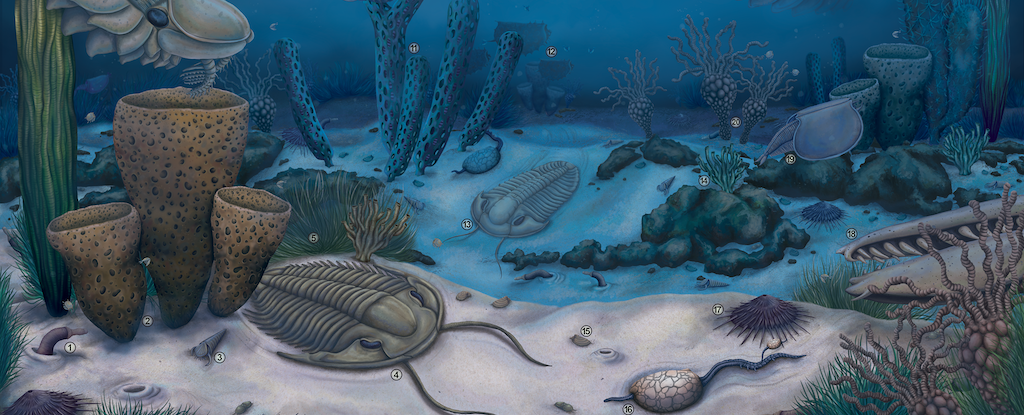A newly discovered collection of fossils from the Grand Canyon offers valuable insights into evolutionary history during the Cambrian period. This significant find, dated at approximately 505 million years ago, is crucial for understanding the evolutionary experimentation that unfolded shortly after the Cambrian explosion, a time marked by a dramatic increase in the diversity of life on Earth.
Researchers from the University of Cambridge uncovered over 1,500 small, exceptionally well-preserved carbonaceous fossils in samples collected from the Bright Angel Formation (BAF). This area was once a shallow marine environment, providing a rich habitat for a variety of life forms. The majority of the fossils belong to priapulid worms, with additional specimens including crustaceans and mollusks.
Fossils from the later stages of the Cambrian period are relatively rare, leaving gaps in the fossil record. This new discovery helps to fill in those blanks, revealing the adaptations and innovations that emerged during a time of increased competition among species. For instance, the worm species Kraytdraco spectatus exhibited teeth adorned with complex filaments. These structures varied in shape and length, suggesting that these worms used their durable teeth to scrape surfaces, dislodging food particles that they could filter from the water using the longer filaments.
Crustacean fossils found in the BAF display evidence of suspension feeding. Tiny hairs on their bodies helped direct food particles towards their mouths, where they were processed by molar-like structures. Meanwhile, the mollusks discovered featured rows of shovel-shaped teeth, likely used to scrape algae or microbes off surfaces, showcasing the diverse feeding strategies that evolved during this period.
The Cambrian explosion is often celebrated for its rich fossil record, yet the period that followed is equally significant. The newly analyzed fossils provide a fascinating glimpse into a time when complex life forms were not only established but also began to innovate and adapt to their environments. This evolutionary experimentation laid the groundwork for most of the major animal groups that exist today, including arthropoda, which encompasses insects, arachnids, and crustaceans, as well as chordata, the phylum that includes vertebrates like humans.
The insights gained from this research highlight the competitive dynamics of the late Cambrian period. The interactions and adaptations developed during this time may have shaped the evolutionary strategies that allowed these species to thrive over the following half billion years. As the researchers note, “If the Cambrian Explosion laid the foundations of modern metazoan adaptive solutions, it is the scaling up of their competitive interactions that may have enforced directional, long-term trends of functional innovation in the Phanerozoic biosphere.”
The study detailing these findings was published in the journal Science Advances, marking a significant contribution to our understanding of early animal evolution and the ecological complexities that defined the Cambrian period. This discovery not only enriches the fossil record but also underscores the importance of continued exploration and research into our planet’s evolutionary history.





























































